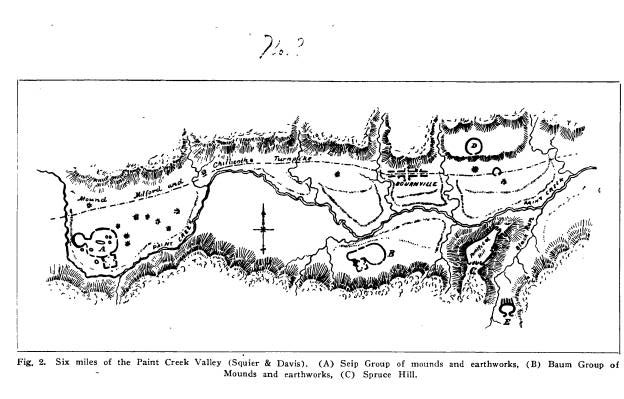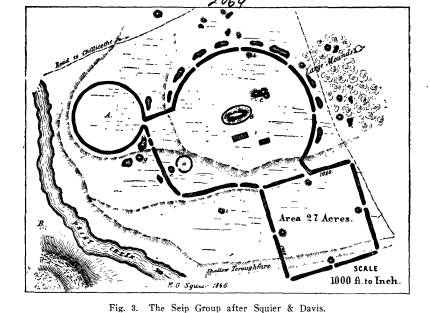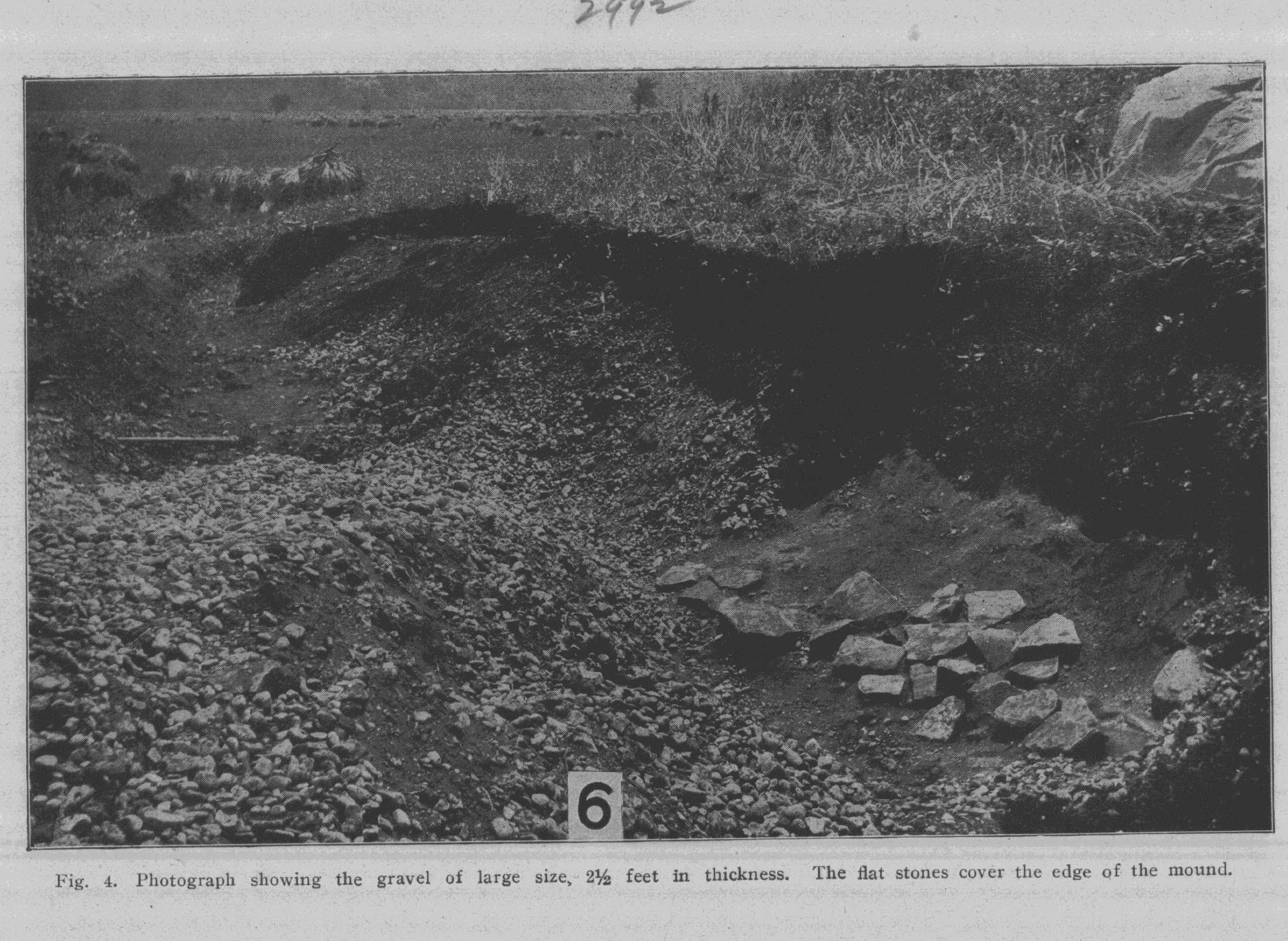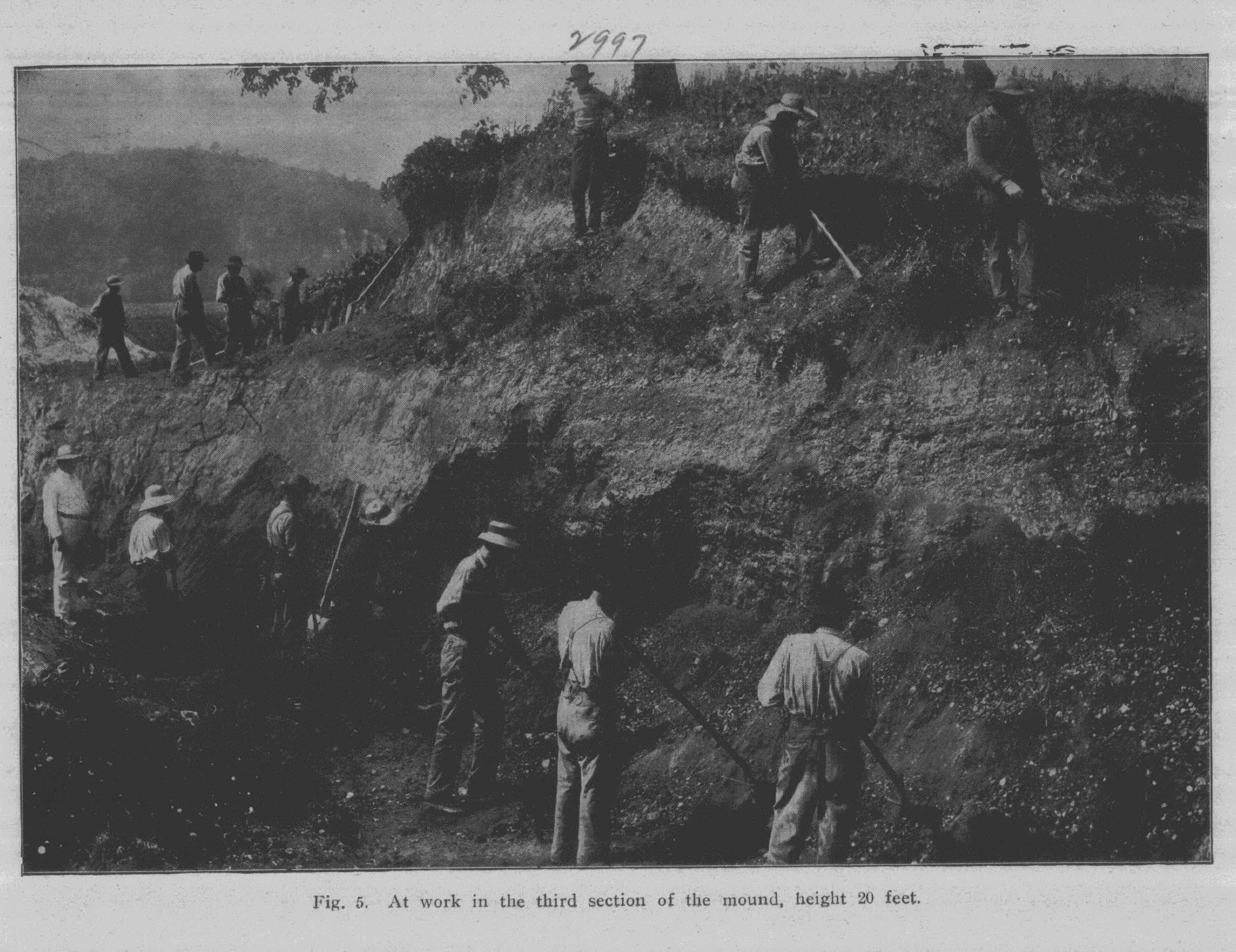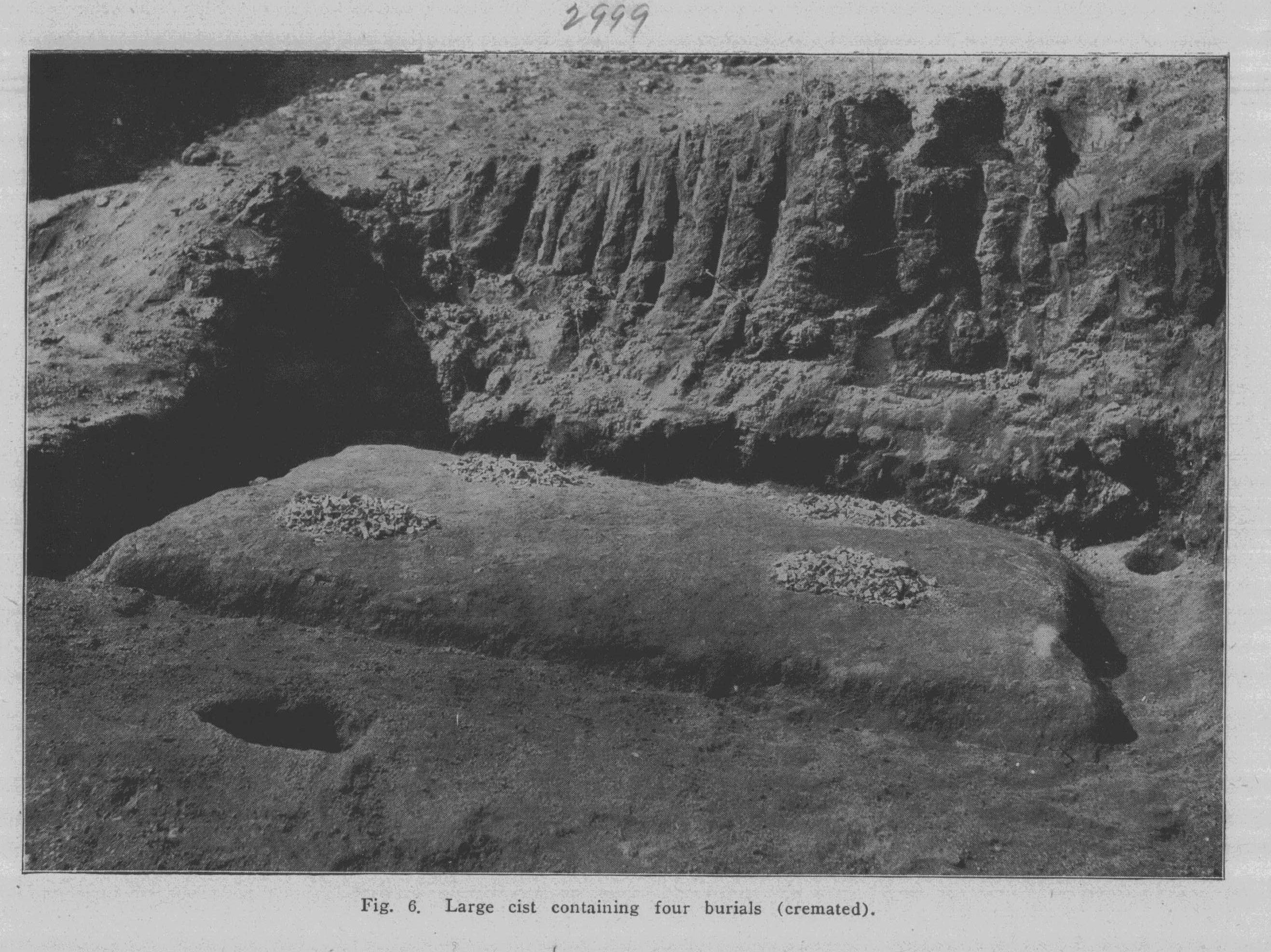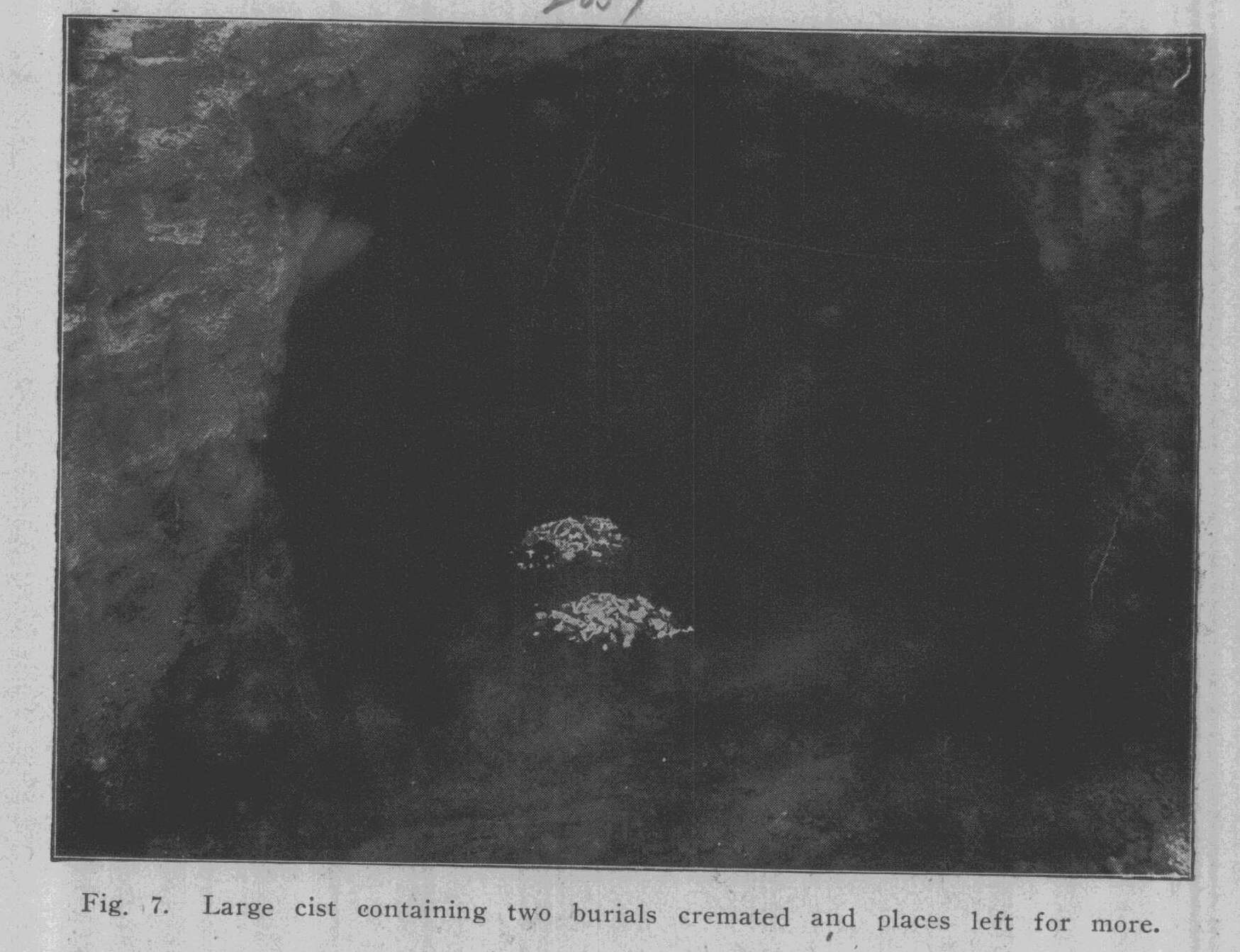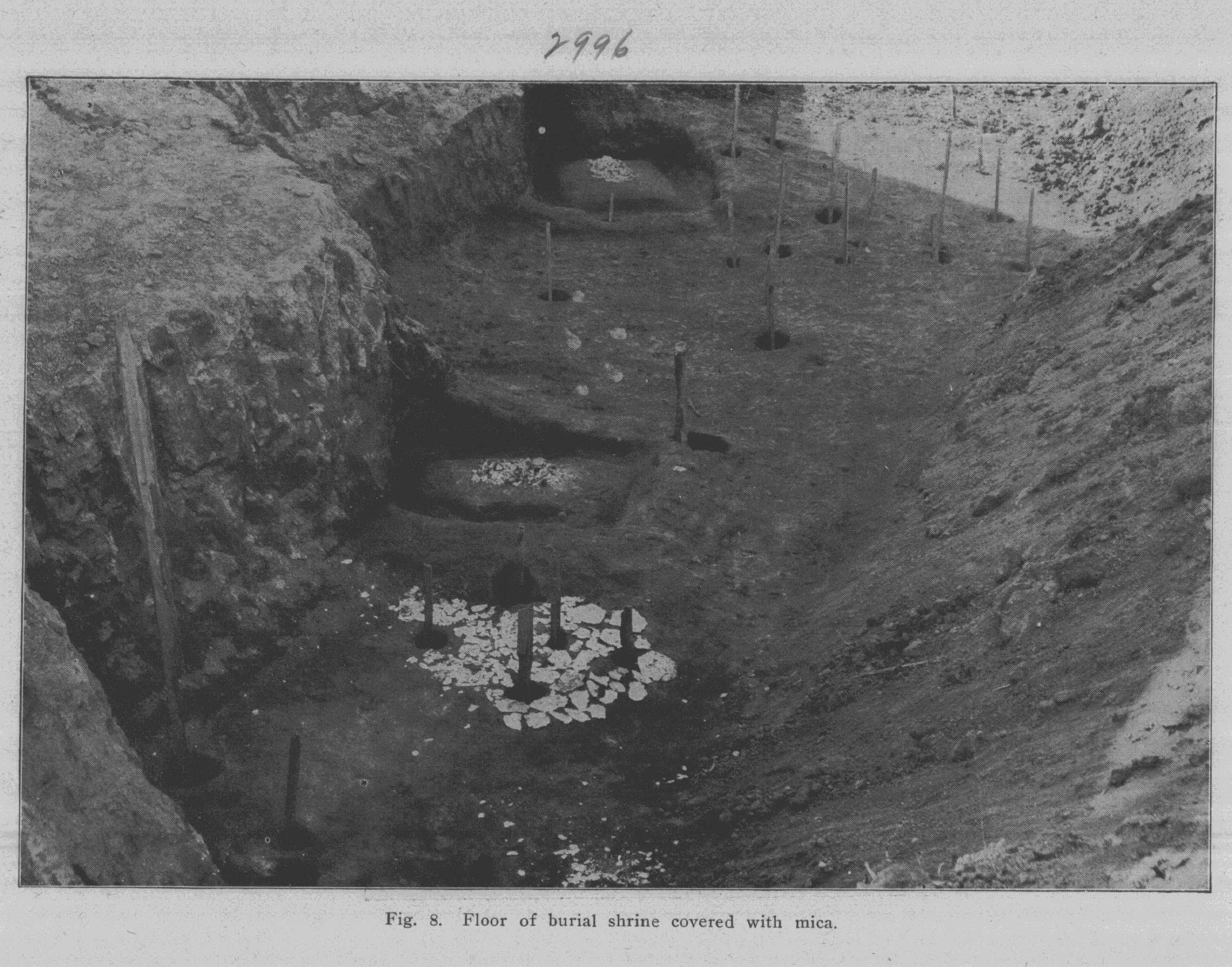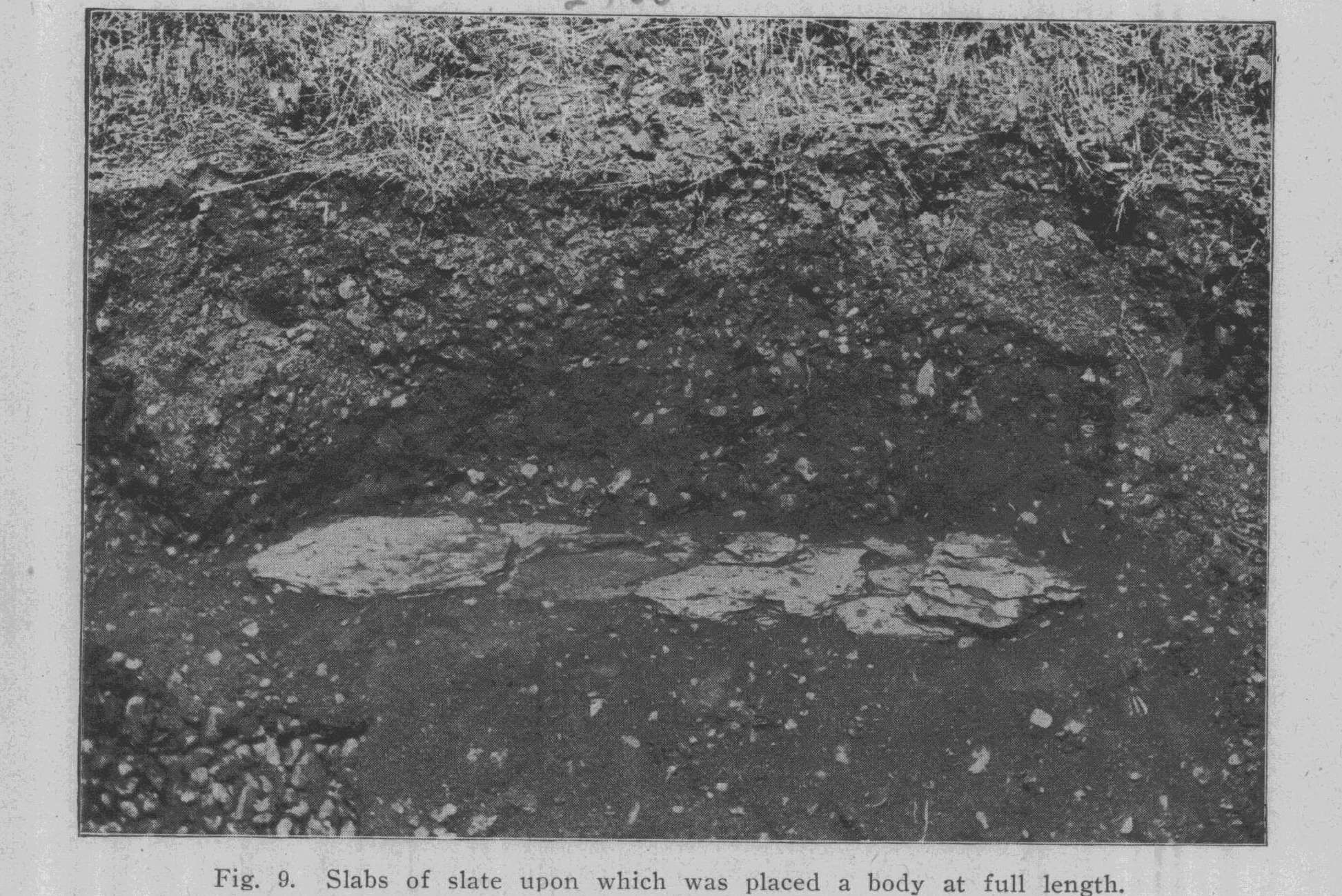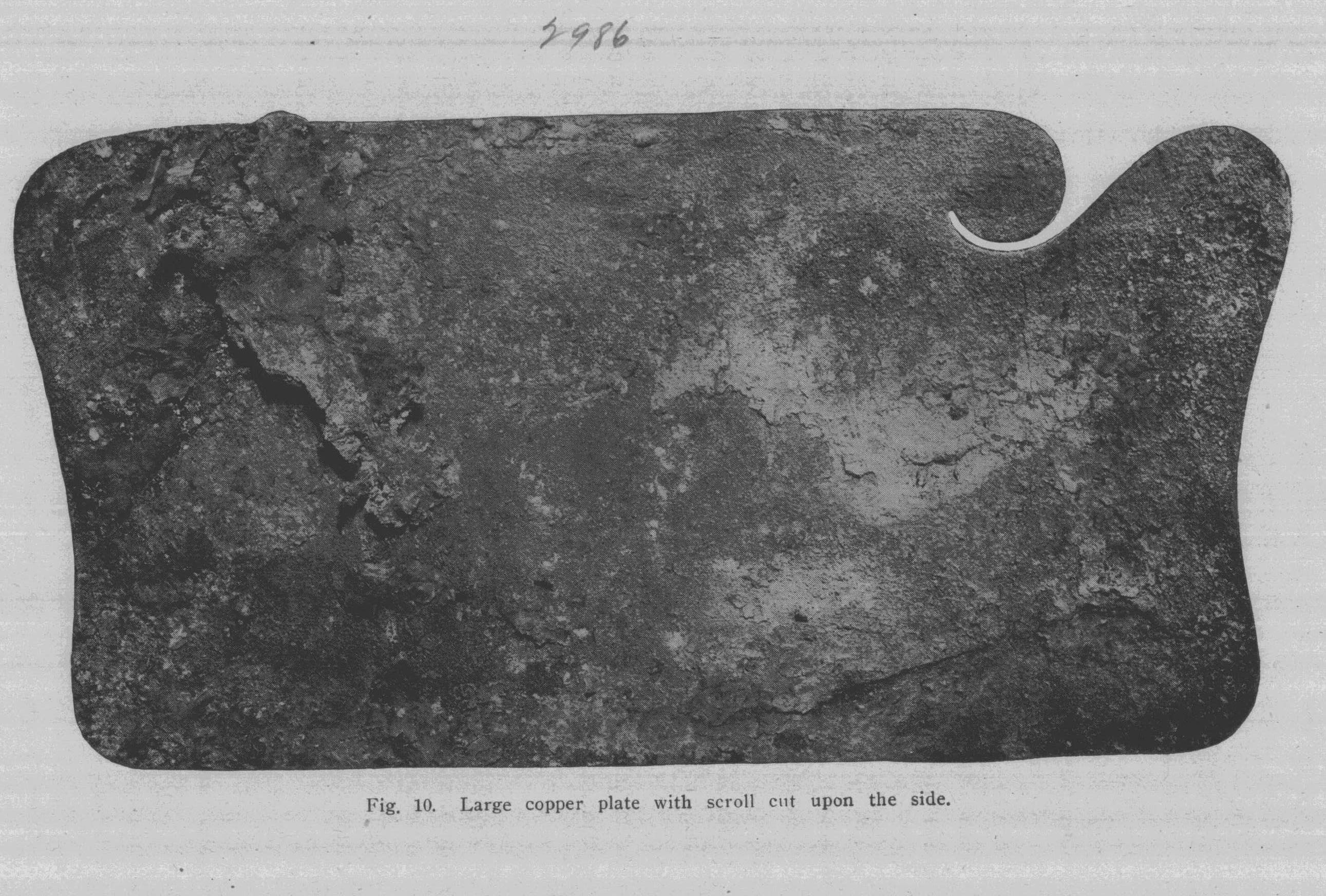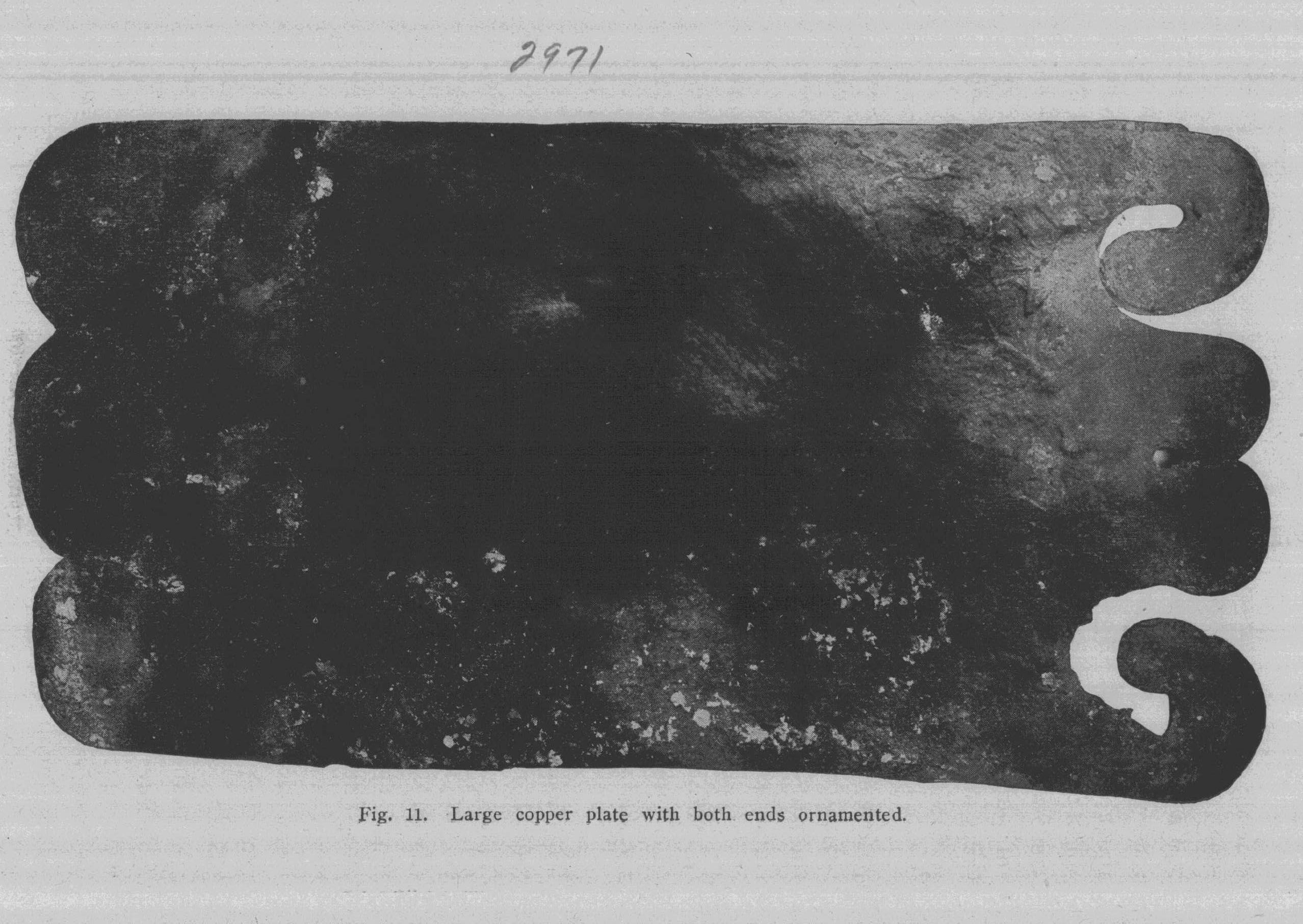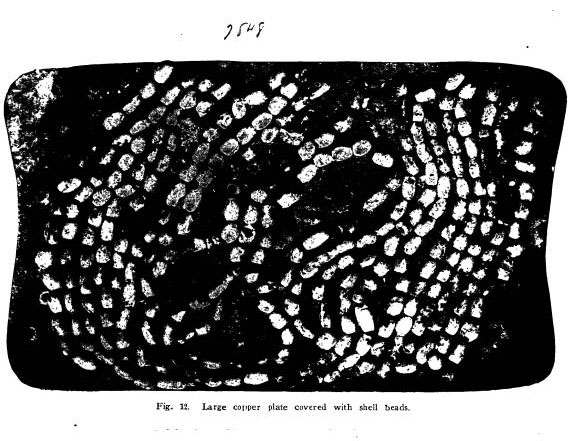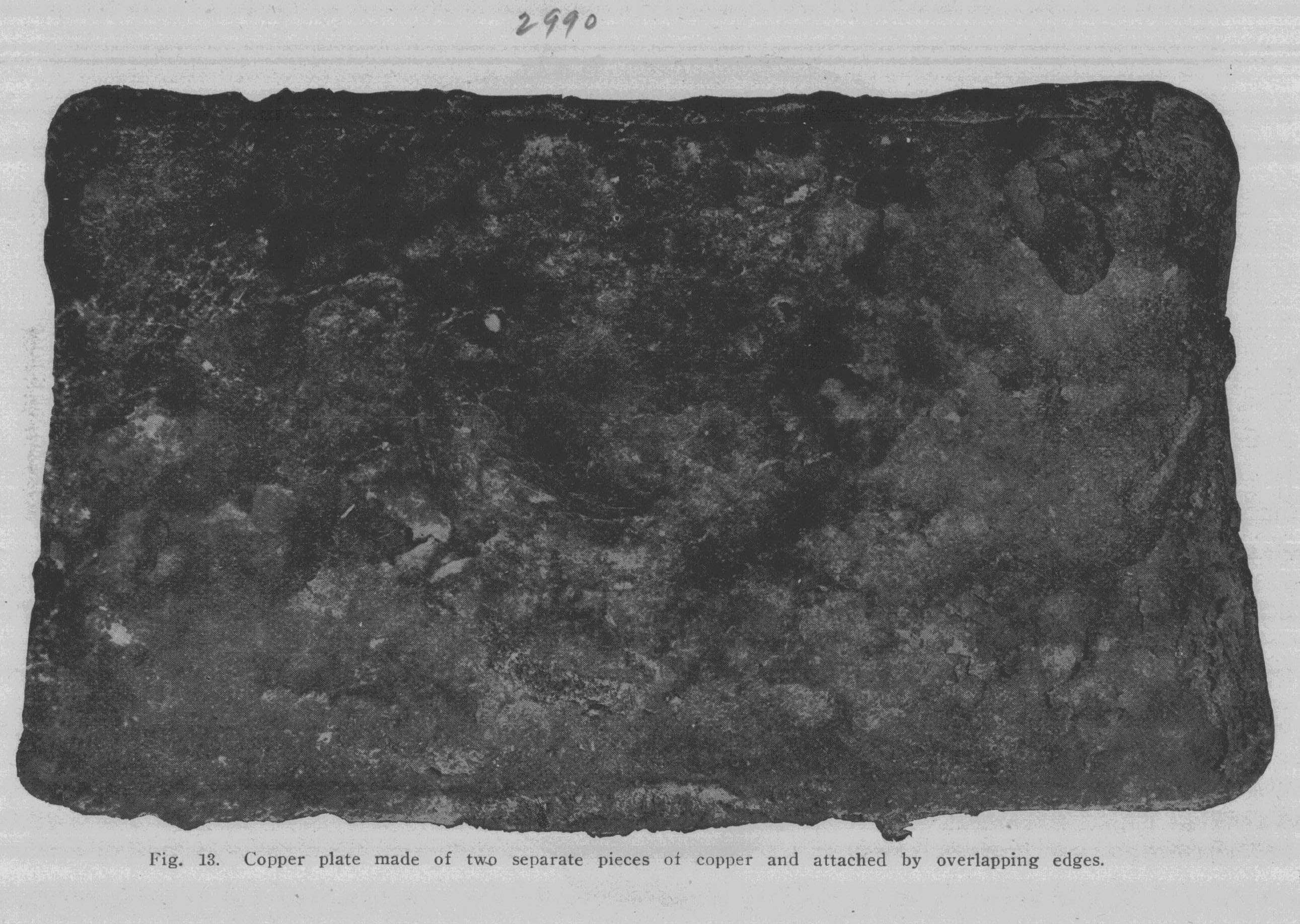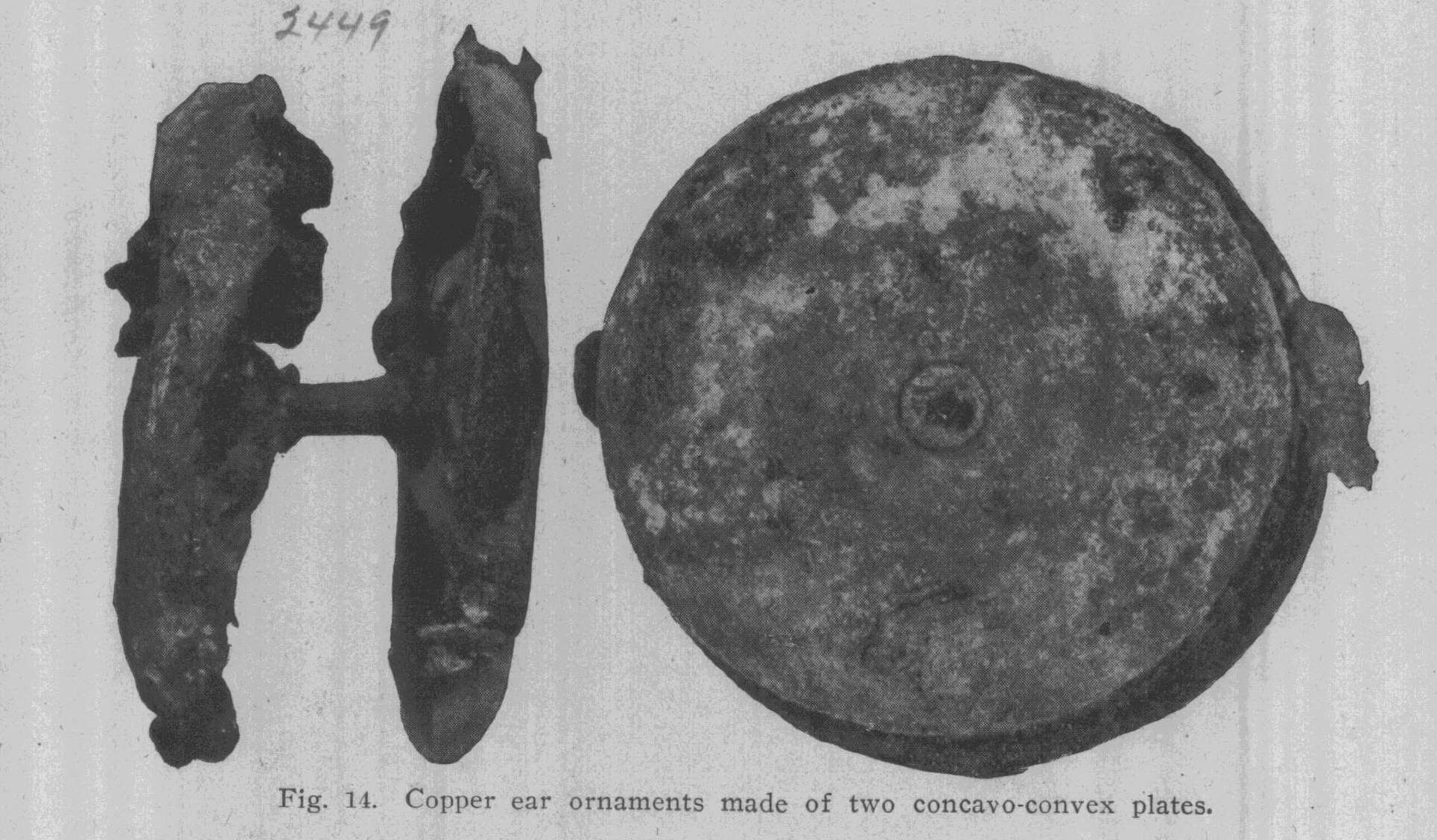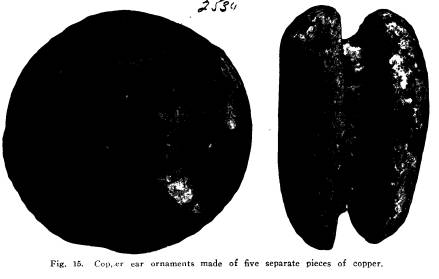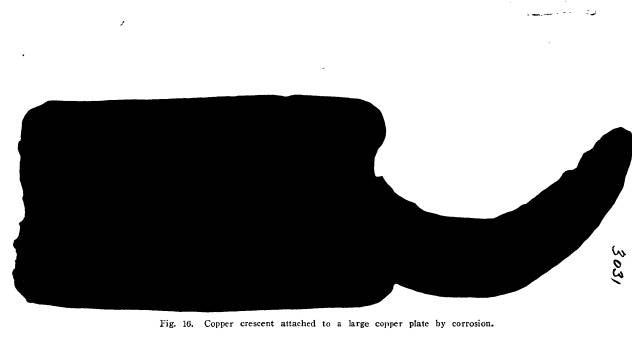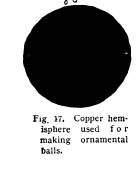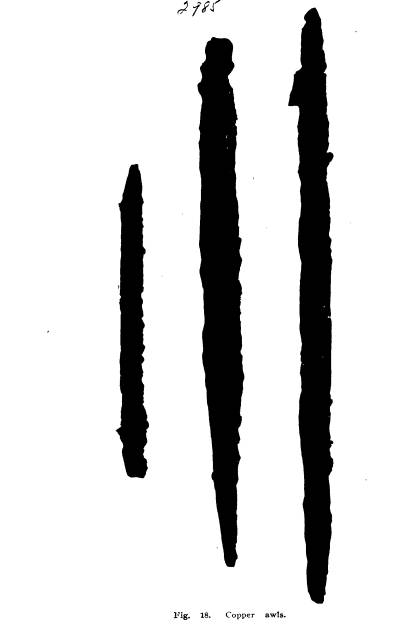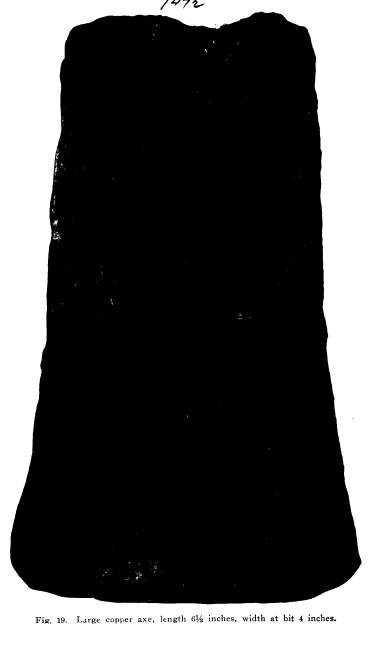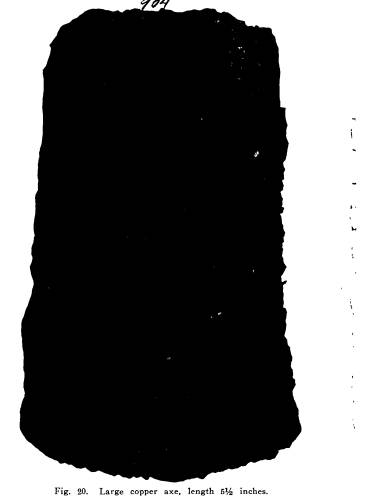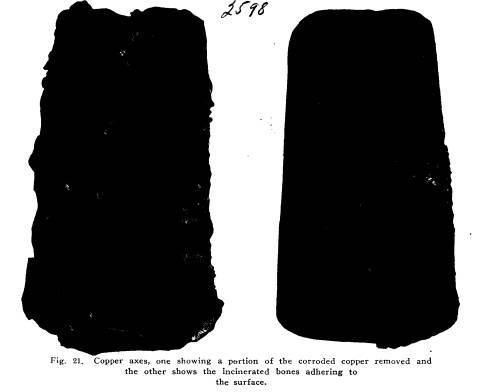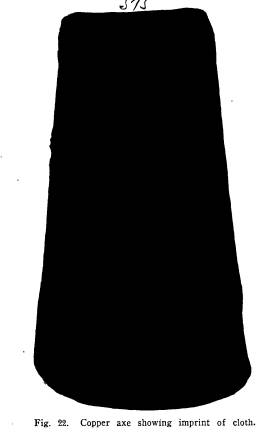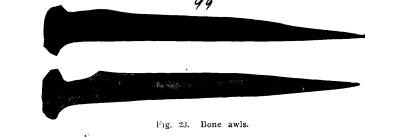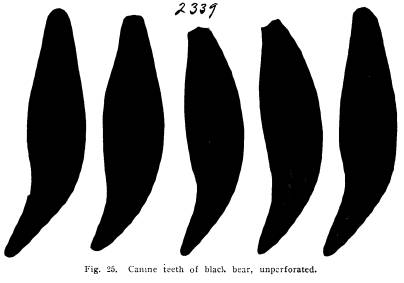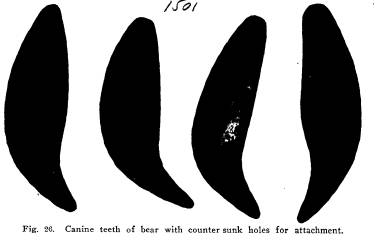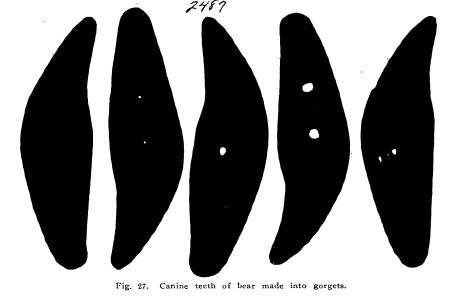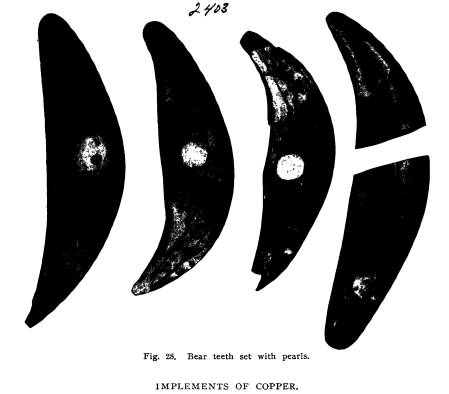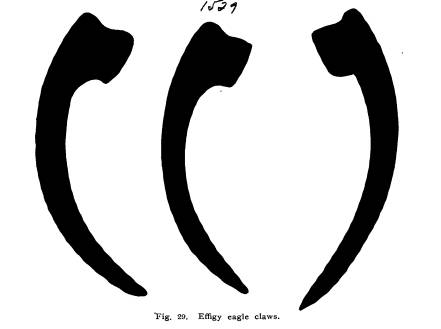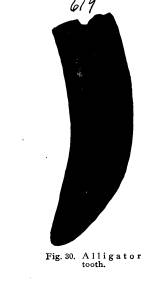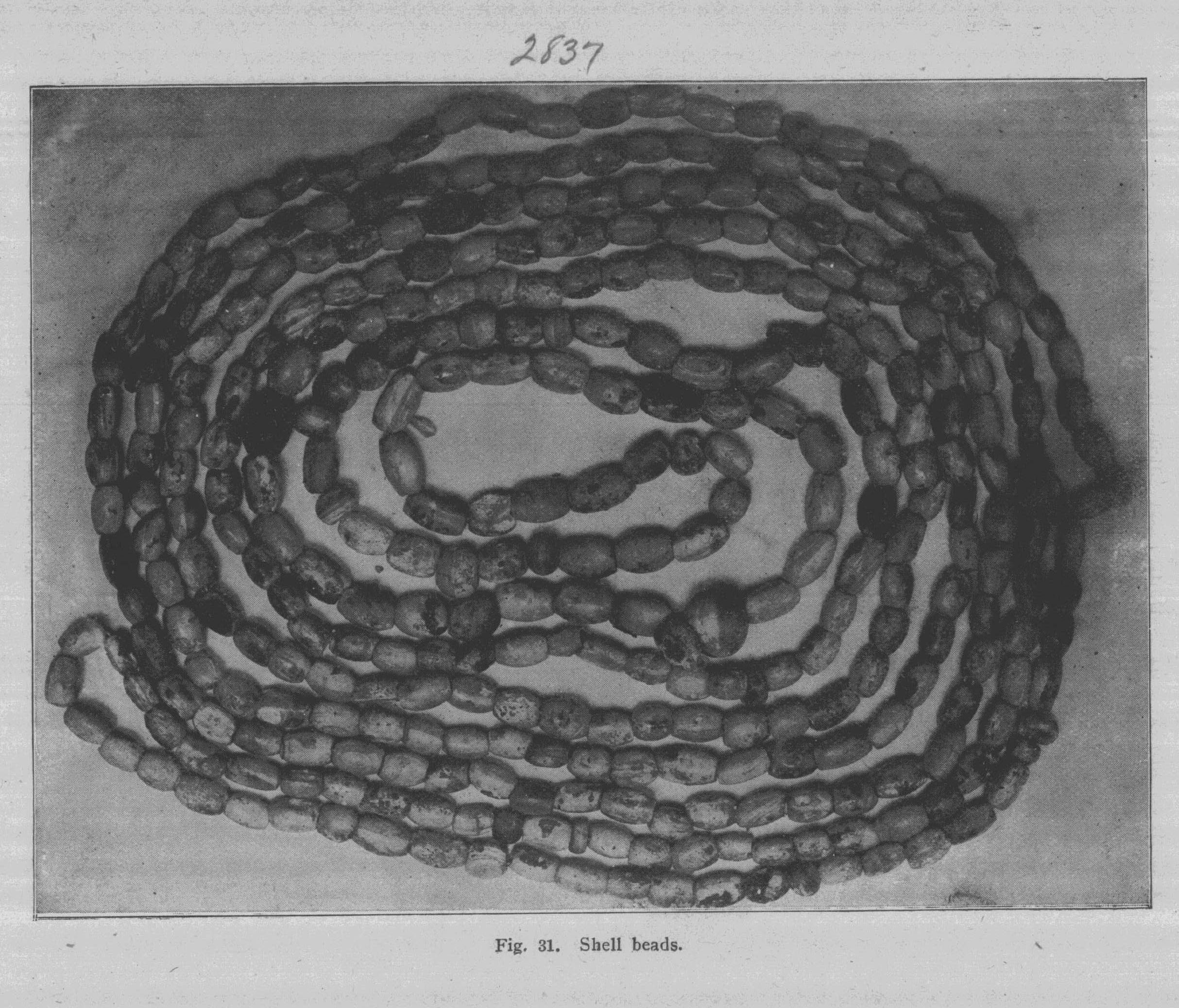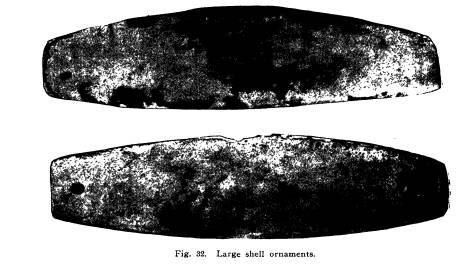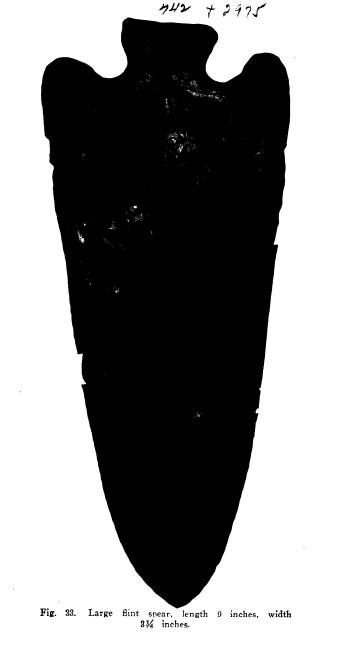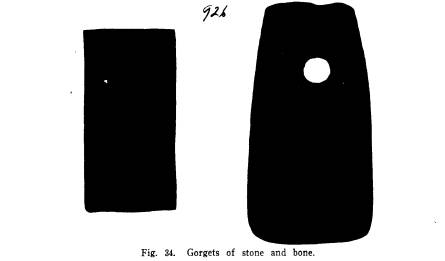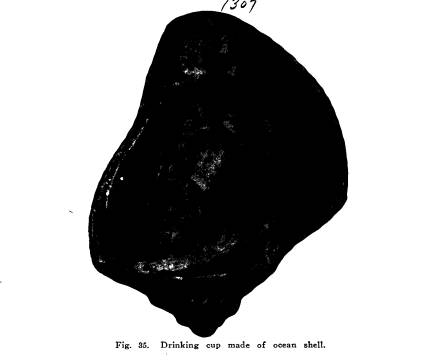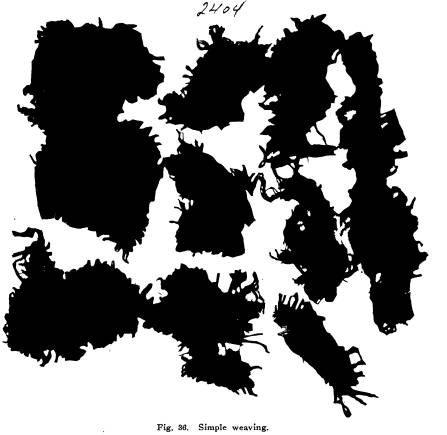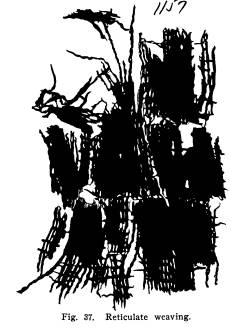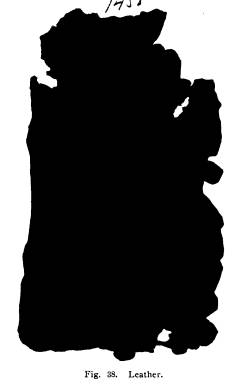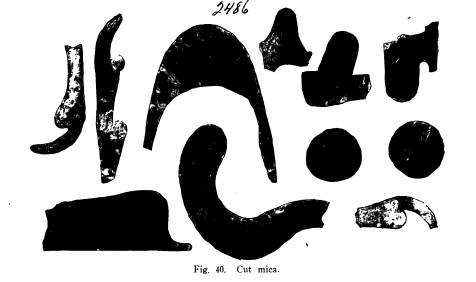Ohio History Journal
EXPLORATIONS OF THE SEIP MOUND.
WILLIAM C. MILLS.
The Seip Mound is located within the
largest prehistoric
earthworks of the Paint Creek Valley
known as the Seip Group.1
One very large mound and another half
its size enclosed
with earthworks, which form a
combination of two circles and a
square, and five mounds situated outside
the earthworks, but in
close proximity to them, constitute the
Seip Group. This group
is located in Paxton Township, Ross
County, about 3 miles east
of Bainbridge, a village situated in the
extreme western portion
of the county. The mounds can readily be
reached by convey-
ance, as the old Milford and Chillicothe
Pike passes in sight of
the Works and the Detroit Southern
Railway has a flag station
only a quarter of a milt away.
Paint Creek Valley has long been known
for its beautiful
scenery and productive soil and is
drained by Paint Creek, a
stream of irregular turbulence, crossing
from one side of the
valley to the other until it finally
empties into the Scioto River
south of Chillicothe. The mounds and
earthworks comprising
this group occupy the greater portion of
the rich agricultural bot-
tom land in the great bend formed by
Paint Creek as it changes
its course from the north side of the
valley directly to the south
side, where it follows the base of the
foothills for some distance.
At the present time one can readily
trace the circles, but the
square with its various openings cannot
be so readily traced.
Yet, when the site is freshly plowed,
the old walls are easily
traced by a slight elevation and the
change in the appearance of
the soil. The mounds, which are all
quite large, have deterior-
ated less than the earthworks, but the
farm cultivation of the
few outside the walls has greatly
reduced them in height. The
two mounds within the walls have
suffered little by the encroach-
ment of agriculture. The largest of the
two mounds is known
1Described
by Squier and Davis in "Ancient Monuments of the
Mississippi Valley", pp. 4 and 58.
269
Explorations of the Seip Mound. 271
as the Pricer Mound, and at the present
time a number of large
native trees are growing upon its top
and sides. It is about 25
feet high and 240 feet long. The mound
has been fenced about,
and the enclosure is now used as a sheep
pasture, consequently,
the surface of the mound is devoid of
the usual growth of weeds
and bramble, so common to the large
mounds in Ohio.
The Seip group has long been known to
the early archaeo-
logical writers and explorers. Mr. Caleb
Atwater gave a de-
scription of the Works in the first
volume of the American An-
tiquarian Society, 1820, and in 1833 the
same writer again de-
scribed the works in his
"Description of Western Antiquities"
and from this book the description was
widely copied by other
writers on American Antiquities and I
quote what Mr. Atwater
has written about the Seip Group:
"Works at A. are all connected as
represented in the plate. Their
several contents will be seen by
referring to it. The square work, it will
be seen, contains exactly the same area
with the square one belonging to
B, and is, in all other respects, so
much like that work, that to describe
this, would be to repeat what has been
said concerning the former. Such
coincidences are very common in our
ancient works; so that a correct
description of one applies to hundreds
in different parts of the country.
"There is no mound within its
walls, but there is one about ten feet
high, nearly one hundred rods to the
west of it. The large irregular
part of the larger work, contains, as
will be seen, seventy-seven acres
and one-tenth, in the walls of which are
eight gateways, besides the two
leading into the square just described.
These gateways are from one to
six rods in width, differing in that
respect, very much, one from another.
"Connected by a gateway with this
large work, is another in the
Northwest, sixty poles in diameter. In
its center is another circle, whose
walls are now about four feet high, and
this lesser circle six rods in diam-
eter. There are three ancient wells at
w, w, w, one of which is on the
inside, the others on the outside of the
wall. As the drawing shows,
within the large work of irregular form,
are two elevations, which are
elliptical. The largest one is near the
center; its elevation is twenty-
five feet; its longest diameter is
twenty rods; its shortest, ten rods; its
area is nearly one hundred and
fifty-nine square rods. This work is
composed mostly of stones, in their
natural state. They must have been
brought from the bed of the creek, or
from the hill. This elevated work
is full of human bones. Some have not
hesitated to express a belief, that
on this work human beings were once
sacrificed.
"The other elliptical work has two
stages; one end of it is only
about eight feet high, the other end is
fifteen. The surfaces of both are
|
272 Ohio Arch. and Hist. Society Publications.
smooth. Such works are not as common here as on the Mississippi, and they are more common still further south, in Mexico. "There is a work in form of a half moon, set around the edges with stones, such as are now found about one mile from the spot from whence they were probably brought. Near the semicircular work is a very singular mound, five feet high, thirty feet in diameter, and com- posed entirely of a red ochre, which answers very well as paint. An abundance of this ochre is found on a hill not a great distance from this place; and from this circumstance, the name of the fine stream in the vicinity, in all probability, is derived. It is called "Paint Creek." |
|
|
|
Mr. Josiah Priest, an early writer on American Antiquities, 1833, quotes at some length from Atwater, but unfortunately places the ochre mound in another group. Squier and Davis also describe and illustrate this group, with a drawing, in "Ancient Monuments of the Mississippi Val- ley," page 58, and I quote from them and reproduce their draw- ing, which is shown in Fig. 3. "Within the larger circle, and not far from its center, is a large elliptical mound, two hundred and forty feet long by one hundred and |
274 Ohio Arch. and Hist. Society Publications.
sixty broad, and thirty in height. It is
considerably larger than any other
single mound in the valley, and covers a
little more than two-thirds
of an acre. It seems to be composed, at
least towards the surface,
of stones and pebbles, -a feature
peculiar to a certain class of mounds,
of a highly interesting character. It is
surrounded by a low, indistinct
embankment, the space between which and
the mound seems to have
raised by the wasting of the latter.
Perhaps this was a low terrace.
To the right of this fine mound is a
group of three others in combina-
tion, as shown in the plan at c. There
are several other small mounds
in and around the work. Several very
large and beautiful ones, com-
posed entirely of clay, occur about
one-fourth of a mile distant, in the
direction indicated in the plan.
"The entire work is surrounded by
deep pits or excavations, usually
called 'wells,' from which the materials
for the mounds and embank-
ments were procured. So numerous are
these, and such serious obstacles
are the mounds and embankments to
cultivation, that a deduction of
several acres is allowed to the tenant
in consequence, by the lease of the
estate upon which they occur.
"The small circle at a is two
hunded and fifty feet in diameter.
It has been so much reduced by the
plough as to be traced with diffi-
culty.2
"Although the square enclosure
connected with this work is situated
on the second terrace, a portion of it,
at periods of great freshets, is
invaded by the water, which passes
through a shallow thoroughfare indi-
cated on the map. This singular
circumstance is easily accounted for.
The creek in its course strikes the base
of a high hill at B, composed of
shale, which readily undermines
occasioning great slips or slides. These
fill the channel of the creek, damming
it up and forcing it out of its
usual course. It was probably at the period
of one of these slides, that
the creek, in its reaction on the
opposite shore broke through the em-
bankment and formed the thoroughfare, or
dry channel, above mentioned.
The remark, therefore, that the
earthworks of the West never occur
upon the first, or latest-formed
terrace, and are always above high-water
mark, is not at all invalidated by this
circumstance."
THE SEIP MOUND.
The Seip Mound, named in honor of the
Seip brothers, the
present owners ofthe land, is about half
the size of the Pricer
Mound and is located upon the same
terrace, only a short dis-
tance to the east of the larger
mound. (See Frontispiece).
2Mr. Atwater (Archaeologia Americana,
Vol. 1, page 143), describes
the small mound at e, as composed
"entirely of red ocher, which answers
very well as a paint." Its present
composition is a clayey loam. It has
been examined and found to contain an
altar.
276
Ohio Arch. and Hist. Society Publications.
Squier and Davis, in their drawing of
this group, note the
Seip Mound as three distinct mounds as
shown in Fig. 3. I
have classed the group as one mound
though made up of three
separate but connected mounds, as our
explorations afterward
revealed. This feature is invariably
present in all large mounds
of this culture.
The measurements of the various sections
of the combined
mound differ greatly. Commencing at the
west end of the
mound, which was the largest, the height
from outside measure-
ments was 18 feet, but as the
explorations progressed, the mound
was found to be 20 feet and 1 inch
high, making the base 2 feet
and 1 inch lower than appeared from the
general level of the
surrounding surface. The diameter of
this section north and
south was 120 feet. The second
section, closely connected with
the adjoining one on the east, was 11
feet 10 inches high with a
diameter north and south of 70 feet. The
third section was
not on a line east and west with the
other two sections but was
placed to the south, as shown by Fig. 3,
and clearly connected
with section 2. It was 6 feet high with
a diameter of 40 feet.
SPECIAL FEATURES OF THE EXTERIOR
OF THE MOUND.
The mound for the most part was composed
of loam or sur-
face soil, secured upon all sides of the
mound and in close prox-
imity to it. The top of the first
section, or larger mound, was
composed of clay and limestone gravel.
This combination, in
the course of time, became cemented
together and proved quite
a problem in its removal, as almost
every portion had to be
picked loose before a shovel could be
used. Another feature of
the mound was discovered shortly after
work was begun on
the north side by finding, near the base
of the mound, several
flat stones, averaging 10 by 14 inches,
so placed as to resemble
steps, and a further examination
revealed a series of flat stones.
18 to 20 inches under the surface,
extending from the base
toward the top of the mound. The steps
were, no doubt, used
to aid in reaching the summit of the
mound with the heavy
loads of earth, in the effort of the
builders to complete the monu-
ment.
278
Ohio Arch. and Hist. Society Publications.
Another external feature frequently met
with in the mounds
of this culture is the use of gravel in
construction, but in this
mound, gravel of large size, with the
appearance of having been
screened, was placed entirely around the
base of the mound, to
a depth of two feet, in many places the
depth reaching 21/2 feet.
The width varied from 7 feet to 5 feet,
and at times was a great
hindrance to the workmen, as this gravel
had to be removed, in
order to expose the base of the mound,
and at times could not
be shoveled but had to be removed by
hand.
Only one large "Pin Oak" tree
was left standing upon the
mound by the owners, and this was
variously estimated, before
removal by us, to be from 100 to 175
years old, but when cut
and the rings of growth counted, it was
found that the tree prob-
ably did not exist when the mound was
first noted by Atwater
in his Archaeologia Americana. 1820.
SPECIAL FEATURES OF THE INTERIOR OF THE
MOUND.
Many very interesting features, as
compared with other
mounds of this culture, were brought to
light in the examination
of the Seip Mound.
First: The site of the mound exhibits
three separate in-
closures, circular in form, as evidenced
by the post molds, ex-
tending into the base of the mound. The
post molds had
charred wood at the top of the mold,
indicating that the posts at
one time extended above the surface, and
no doubt formed the
sides of the building, or charnel house.
Second: The object of the mound was a
monument to the
dead, placed over the site of the
charnel house. The burials
were similar in many respects to those
of the Harness Mound,3
but differing in many instances as to
the number of cremated
dead, placed in a prepared burial cist.
All the burials placed in
the charnel house were cremated and
graves prepared for the
reception of the charred bones and ashes
of the dead.
Third: The burials in the mound were of
two kinds: cre-
mated and uncremated. The cremated were
all placed upon the
8Explored
in 1903, and described in "Certain Mounds and Village
Sites in Ohio", Vol. 1, by William
C. Mills.
|
Explorations of the Seip Mound. 279
floor of the charnel house, while the uncremated were promiscu- ously placed in various portions of the mound above the base line, only one having a prepared grave for the reception of the body. Fourth: The builders of the Seip Mound were similar in character to those of the Harness Mound, and represented the highest culture of prehistoric man in Ohio. The special features enumerated above, can be better un- |
|
|
|
derstood by a further discussion, and I shall attempt in the fol- lowing pages, to give a detailed account of the examination of each section of the mound.
THE MOUND SITE. The Seip Mound is located practically in the center of a large circular earthwork which, for the most part, occupies the third terrace of the Paint Creek Valley; the surface of this por- tion of the terrace is quite level, but this particular spot selected |
Explorations of the Seip Mound. 281
by the builders was somewhat lower than
the surrounding sur-
face. Perhaps the surface soil, which
had been removed al-
most to the gravel, had been used in the
construction of the large
Pricer Mound, which is only a few
hundred yards away. After
selecting the site, the building was
constructed by placing large
posts in the ground to a depth of an
average of 21/2 feet. These
were so placed as to form a circular
building, 60 feet in diameter
east and west, and 72 feet in diameter
north and south. The
posts, forming the outside of the
building were placed upright in
the earth, and would average 21/2
feet apart. Two entrances to
the building were found: one to the
northwest, and one to the
east. The entrance to the northwest was
of peculiar construc-
tion, and made by the walls overlapping
each other, forming a
passageway, or hall, about 3 feet in
width, and 7 feet in length.
The passageway was covered with fine
sand varying in thickness
from two inches to one-half inch, and so
firmly packed as to
have the appearance of coarse
sand-stone.
The floor of this section of the mound
was very irregular,
as shown by the examination. On the
south side but little fill
was required to make the floor level. As
the north side of the
floor of the charnel house was
approached, it was found that 17
inches of a fill was required to make
the floor level. This fill
was made with logs, brush, gravel and
clay. The logs and
brush were piled in the lowest places,
and covered with clay and
gravel. In the course of time the logs
would decay, but the
imprint, or mold would remain. Very
frequently the molds
would connect with the large upright
post molds, extending deep
into the base. At first glance, one
might infer the builders had
some design other than building up the
floor to a common level,
but a careful examination revealed
nothing beyond the use of
logs as a filler in building the base or
floor to a uniform level.
The entrance to the charnel house from
the east was a short
passageway from the second circular
charnel house. The pass-
ageway was only about 3 feet in width
and 21/2 feet in length;
the floor was also covered with fine
sand.
The second section was also a circular
charnel house meas-
uring 43 feet east and west, and 32 feet
north and south. The
floor of this section did not require
very much, if any, filling to
|
282 Ohio Arch. and Hist. Society Publications.
make it level. The outside posts formed the sides of the build- ing, and were quite large on the north side, while those used for the other portions were similar in size to the first section. The openings in this section were two; one leading into the first section, as described, and the second leading into the third section, with practically no passageway; as the third section was built to the southeast of the second section. The third section was oblong; the longest diameter, which was north and south, |
|
being 22� feet, and the shortest diameter east and west, 15 feet. The floor of the third section was also prepared and leveled, the same as the other two sections. The posts used in the construc- tion of the sides of this section were all smaller than those used in the other sections.
THE OBJECT OF THE MOUND. * The object of the mound was a monument to the dead, erected over the site of the various charnel houses described |
284
Ohio Arch. and Hist. Society Publications.
above. Before the monument was erected,
the superstructure
was destroyed by fire, as evidenced by
the charred remains of
the posts forming the outside walls, as
well as the posts promis-
cuously distributed throughout the
interior of the structure,
which perhaps, supported the roof. For
the most part, the up-
right posts were burned off at the base
line, but now and then
a large post would not all be consumed,
and a portion of the
charred remains would extend, in many
instances, several feet
above the base, and was preserved, while
the portions of the
posts extending into the ground were
entirely decayed, and only
the post mold remained. Very frequently,
the post molds would
show a perfect imprint of the bark,
while in others knots, or
any imperfection in the log, would be
shown. In several in-
stances large quantities of bog iron had
formed in the mold.
CREMATED BURIALS.
All the burials placed in the charnel
house were cremated,
and I shall describe each section, as
they differed somewhat from
each other.
In the first section, which was the
first charnel house
erected, and the largest of the group,
many of the prepared
graves were so constructed that one or
more burials could be
placed in the same burial cist. This was
done by preparing a
large platform of prepared clay (Fig. 6)
usually 6 to 7 feet in
length, and 4 feet wide, and building up
the sides and ends with
round logs, varying in diameter
from 5 to 3 inches, to the
height of 18 or 20 inches. A cover was
placed over the top,
which was made up, usually of split
pieces, instead of round
pieces, used for the sides and ends.
Clay was then placed
around the sides and ends to firmly hold
the logs in place.
Four burials, as shown in Fig. 6, made
the largest number
found in a grave, but 2 or 3 burials
were met with quite fre-
quently. A cist with two burials, both
placed on one side of
the grave is shown in Fig. 7. The large
graves were placed
near the center of the charnel house,
and large passageways,
often 6 to 7 feet in width would
intervene. Near the large
graves a cluster of small post molds,
varying in number from 5
to 7 would be found. These posts were
usually placed about
286
Ohio Arch. and Hist. Society Publications.
one foot apart, but not in any
particular form. Frequently the
floor around the posts would be covered
with great quantities of
charred cloth, ornaments, and
implements, and occasionally the
floor would be covered with mica, as
shown in Fig. 8. The mica
was usually placed so as to cover the
floor completely, and only
the natural mica crystals, split in many
pieces, were used. It
seems very probable that the cluster of
posts near the graves
were the sacred shrines for the dead,
and here the clothing, and
very frequently, some of the most
interesting ornaments, such
as cut and polished human jaws, large
effigy eagle claws, bear
teeth set with pearls, pendants of ocean
shells, and shell and bone
beads in great numbers, and in a few
instances, copper orna-
ments were found with the charred woven
fabrics, so promiscu-
ously placed upon the floor surrounding
the posts. At one of
the shrines a quantity of charred rope
almost 4 feet in length,
and a number of effigy eagle claws made
of bone, were found.
The rope was 3-ply, and made of coarse
bast fibre, perhaps that
of Bass-wood.
The graves placed near the outside walls
we're all smaller
than those placed in the center of the
charnel house, and con-
tained only the remains of one
individual, and in this respect,
were similar to the burials in the Edwin
Harness Mound.4
All the burials in this section of the
mound, which num-
bered 24, were cremated at the large
crematory located just in-
side the northeast entrance. The
crematory, when uncovered,
was perfectly devoid of ashes or human
remains and measured
6 feet by 8 feet, the longer diameter
being east and west.
All the graves, both large and small, in
this section, were of
the plain elevated platform kind, so
common in the Edwin Har-
ness Mound. The platform type was made
of clay, and in-
variably elevated from 6 to 10 inches
above the floor of the char-
nel house. The platform was usually
higher in the center, grad-
ually sloping to the sides and ends,
where logs averaging about
6 inches in diameter had been placed,
usually in the form of a
parallelogram. The clay used in the construction of the grave
4The Edwin Harness Mound is located
eight miles south of Chilli-
cothe, along the Scioto. Explored 1903,
and described in The Society's
Publications -Vol. 16, by William C.
Mills.
288
Ohio Arch. and Hist. Society Publications.
had the appearance of having been
puddled before being used,
and in many instances, after the coating
of puddled clay had
been placed over the grave, a fire was
built and the clay burned
to a light red. The ashes and any
charcoal that might remain
were removed before the incinerated
remains were placed in the
grave.
As stated, the single graves in the
first section were similar
in construction to those of the Harness
Mound, though the final
burial ceremony must have been
different. In the Harness
Mound, after the incinerated remains had
been placed in the
grave, objects of clothing, together
with straw, bark, or twigs
were placed over the remains and set on
fire; while burning,
clay was covered over the grave, thus
preserving the cloth, the
grass, and twigs in a charred state.
This ceremony was dis-
pensed with in this section of the Seip
Mound, and the inciner-
ated remains were placed in the prepared
grave, and a covering
of wood, usually split pieces, was
placed over the top and the
grave covered with earth to a depth of a
few inches.
For the most part, adults were buried in
this section. How-
ever, in the grave containing 4 burials,
one was an adolescent,
and in another, a very small child was
placed by the side of an
adult.
All the burials in this section were
rich in copper imple-
ments and ornaments, placed in the
graves.
The graves in the second section were
similar in construc-
tion to those of the first section, all
being of the platform type,
though they varied greatly in size from
the ordinary single grave
to a very large size, 12 feet 2 inches
long by 4 feet 5 inches wide.
These larger graves contained the
remains of two individuals,
so placed as to occupy the ends of the
grave, the intervening
space not being used, due perhaps to the
fact that this section
together with the third section (which
did not contain a single
burial) was abandoned before the house
was filled. The burials
in the second section were placed around
the side walls, and the
center was devoid of graves.
The final ceremony of burning straw,
bark, and clothing over
the remains, similar to the burial
methods at the Harness Mound,
was in evidence in 9 burials of the 19 found
on the base of the
|
290 Ohio Arch. and Hist. Society Publications.
section, and only one of the 19 was cremated in the grave where the remains were found. The floor of the third section of the charnel house was en- tirely devoid of burials, and at only one point, which was near the west side, did the floor show any signs of having a fire built upon it: here the earth was burned to a deep red, perhaps a body had been cremated there, and the remains deposited in one of the other sections. Perhaps no definite reason can be given for erecting a monument over an unoccupied site, but the most plausible rea- |
|
son therefor, taking into consideration the second section, which was only partially filled, is that the site was abandoned, the char- nel houses burned, and the mound finally erected over all as a monument to the dead.
UNCREMATED BURIALS. The five uncremated burials found in the various sections of the mound were promiscuously placed at various heights from the base line, only one having anything like a prepared grave for the reception of the body. The grave was placed 3 feet above the floor of the charnel house in section number 2. |
|
Explorations of the Seip Mound. 291
The bottom of the grave was formed of large slabs of slate, and the body was laid at full length upon the slabs and covered with soil. Fig. 9 shows the slabs after the skeleton had been re- moved. One burial was found in the third section, 21/2 feet above the floor. No grave was prepared, and the body was doubled up and laid on the mound, and covered with earth, similar to the burial in section two. The two burials evidently were those of individuals who died during the building of the mound, as their implements of copper and ornaments of shell were identical with |
|
|
|
those found in the graves of the cremated dead, placed upon the floor of the charnel house. The other three burials were found in section one. One burial, that of an adolescent, was placed 7 feet above the floor, and was buried similar to the one in section three, with no ap- parent grave prepared for the body. The ornaments of bear teeth set with pearls, and a large string of ocean shell beads, were similar to those found with the cremated dead placed upon the floor. The remains of the other two burials of this section were placed together in a double grave, 10 feet above the floor. |
|
Explorations of the Seip Mound. 293
The grave was evidently dug into the side of the mound, as the outlines of the grave were very noticeable. The remains, when placed in the grave, were perhaps, devoid of flesh, and had been carried from some distant part of the country, or had been tem- porarily buried in some convenient place where the bones could be collected and afterward placed in the mound. The various parts of the skeletons were promiscuously placed in the grave; the skulls were placed upside down and only a few inches apart, the lower jaws detached were placed in another part of the grave; the arm and leg 'bones were placed side and side; several bones of the hand and feet were entirely missing. |
|
|
|
One large copper plate, 10 inches in length and 5 inches in width, and a fine copper axe, 4 inches in length and 2 inches in width, together with large strings of ocean shell beads, were found near the bottom of the grave. The implements and ornaments were similar in every respect to those found upon the floor of the charnel house. My conclusions are, concerning the un- cremated dead promiscuously placed above the floor of the charnel house, that they |
|
belonged to the same culture represented by the cremated dead placed upon the floor of the charnel house; that three of the individuals died during the time required for the erection of the mound, to whom the custom of cremation was dispensed with; that the two dismembered individuals placed in one grave were disinterred, and the remains brought to the mound and buried with the dead belonging to the same culture.
THE ARTIFACTS FOUND WITH THE BURIALS. The artifacts taken from the burials of the mound, as a whole, were very interesting, although in the second and third sections but few implements and ornaments had been placed in the graves, but in the first section, almost every burial was pro- lific in implements and ornaments of copper, mica, shell, and stone. From the 48 burials contained in the three sections of the |
|
294 Ohio Arch. and Hist. Society Publications. |
|
|
Explorations of the Seip Mound. 295
mound, were secured upwards of 2,000 specimens,
representing
the highest art of prehistoric man in
Ohio.
The material from which the implements
and ornaments
were made, came from widely separated
regions. The copper
used in making the implements and
ornaments, no doubt came
from Lake Superior region. The ocean
shells used in making
drinking cups, pendants, and beads,
perhaps came from the Gulf,
and the mica, which was so universally
used for ornament, came
from North Carolina.
The finding of so much material, so
remote from the source
of supply, indicates that the prehistory
inhabitants of this sec-
tion had an intertribal trade, for it
seems impossible that the
Ohio tribes visited the widely separated
points, whence came the
articles noted.
ORNAMENTS OF COPPER.
The best preserved specimens found in
the graves were the
implements and ornaments made of copper,
and perhaps next to
the ear ornaments, the most interesting
of the copper ornaments
are the large copper plates, of which
sixteen were found in the
various sections of the mound. The
plates were made of one
piece of native copper, hammered to
about one-eighth of an
inch in thickness, while a few were
found that would approach
one-sixteenth of an inch in thickness.
The plates varied in size
from 10 inches in length, by 51/2
inches in width, to 31/4 inches in
length, by 2� inches in width. The
plates were made in the gen-
eral form of a parallelogram, with the
ends cut concave, and
the sides straight, one plate had a
large scroll cut on one side,
as shown in Fig. 10, and one plate had
both ends cut into orna-
mental forms, as shown in Fig. II.
The large plate, size 10�
inches long by 51/2 inches wide, and
covered with cylindrical
beads made of ocean shell, is shown in
Fig. 12.
This plate, to
gether with three more, almost equal in
size, and the two orna
mented plates described above, were all
taken from the same
grave. On account of the special
features of this burial cist, I
will quote from my field notes:
Grave number 19, which was
placed within six feet of num-
ber 18, and directly north of it, was
the largest and finest so far
|
296 Ohio Arch. and Hist. Society Publications. |
|
|
|
Explorations of the Seip Mound. 297
discovered in this mound. The cist was made by preparing a platform of clay, the highest point of which was 10 inches above the floor of the charnel house, and 4 inches above the first logs |
|
|
|
laid around this platform to form the walls of cist. The side walls of the cist were 18 inches high, and made in the form of a parallelogram, 7 feet 3 inches in length, and 4 feet in width. |
|
298 Ohio Arch. and Hist. Society Publications.
The molds of the lower logs were fully 7 inches in diameter, while the upper logs varied from 5 to 3 inches in diameter. The usual split pieces as indicated by the molds, were placed over the top. The clay forming the top of the platform had been burned. Upon this platform were placed two burials, one at the south end, which was burial number 21, and one to the east side, |
|
which was burial number 22. They were so placed that further burials could be placed in the cist. Burial number 21, which occupied a portion of the south end of the cist, was an adult, and from the general appearance of the incinerated bones, was no doubt, a male. Before the in- cinerated bones had been placed in the grave, a tanned skin of some animal was placed at the bottom of the cist; upon the skin |
|
Explorations of the Seip Mound. 299
was placed a large copper axe, 6� inches long, 4 inches wide at the bit, and 3 inches wide at the pole. The axe was also wrapped in leather, which was preserved by the salts of copper. The incinerated remains were placed in a pile over the copper axe, and covered with a coarse matting of bark. Between |
|
burials 21 and 22 was placed a large spear point that was very much broken by heat, but it had the appearance of being fully 6 inches in length, if all the pieces could be found, and to that end the entire con- tents of the grave was placed in boxes.5 Practically the same preparation was given burial number 22. The tanned skin was placed on the bottom of the cist, and large copper plates, 6 in number, were placed upon the covered plat- form. Two of the plates differed greatly from the other four, in being deco- rated with scrolls and scallops upon the sides and ends. Over the plates a very large string of beads were coiled. The beads were made of |
|
ocean shell, cylindrical in form, and varied in length from 1/2 to 3/4 of an inch. The beads were firmly attached to the plate by cor-
After the contents of the grave were shipped to the Museum and examined, the various pieces of the spear were found and fully restored: length 9 inches, width 33/4 inches. |
|
|
|
300 Ohio Arch. and Hist. Society Publications.
rosion of the copper. On each side of the copper plates was placed a single ear ornament of copper, also seven large pieces of ocean shells, several of them 6 inches in length, and about one inch in width. All shells were perforated with two holes, one at each end for attachment, and so made as not to be visible from the convex side. This was done by boring a small hole at about the middle of the square end to a depth of 1/4 inch, and connecting |
|
|
|
this hole with another, bored from the concave side of the shell. Ten or twelve bear teeth, which had been split and polished into thin gorget-like forms and perforated with two holes, were placed around the outside of the copper plates. The cremated remains were then placed over the ornaments and several thicknesses of matting, made of bark, were placed over all. Between the two burials, but near to number 22, was lo- cated an adult human skull with lower jaw. * * * * The |
|
|
|
plates and other objects found in the grave, could only be super- ficially examined in the field, and the most interesting points would necessarily be left until the objects were brought to the laboratory. The plate shown in Fig. 10 is perhaps the heaviest and smoothest of all the plates taken from the mound. The scroll pattern cut upon one side of the plate, represents the first specimen of the kind taken from the mounds of Ohio, as far as known. The |
|
Explorations of the Seip Mound. 301
plate was wrapped in leather when it was placed in the grave, and portions still adhere to the plate, as shown in the cut. The plate in Fig. II is perhaps unique. An attempt is made in this plate to decorate the ends of the plate instead of the side. The work of cutting the scrolls is not so perfect and graceful as in the other plate, but is more elaborate. The intervening por- tion between the scrolls is cut into scalloped forms. The other end of the plate is divided into three scalloped sections, and each section has a repousse decoration at the center. The speci- |
|
|
|
men is covered with several layers of cloth, and the repousse decorations do not show so prominent in the Figure. The plates taken from other graves in the mound were simi- lar in form and size to those contained in the grave described. However, one grave containing two copper plates, a large and a small one, together with 8 other copper ornaments. The large plate presented a new feature in copper plates. The original plate was reinforced by being covered with another plate, a lit- tle larger in all of its dimensions. The edges were hammered down over the original plate, in such a manner as to resemble the work of a modern artisan. The plate is shown in Fig. 13. |
|
302 Ohio Arch. and Hist. Society Publications.
COPPER EAR ORNAMENTS. Copper ear ornaments were frequently met with in the graves, and twenty specimens were secured. They were invar- iably found in pairs. The manufacture of these ornaments re- quired skill, as well as a high degree of advancement in orna- mental art. The mode of manufacture of the ear ornaments, although two different types were found, was similar. One type was made of two concavo-convex plates, and were connected by a cylindrical column: but only a few pairs of this type were found. Fig. 14 fully illustrates this type. The other type, which was most common, was made of four plates of copper, |
|
|
|
two of which are circular, and two concavo-convex. The con- cavo-convex plates are attached to the circular pieces, which form the inside of the ornament. The discs are connected with a small cylinder of copper.6 Fig.15 is a good illustration show- ing two views of this type of ear ornaments. Other copper or- naments were found sparingly in the burial cists. From one grave a large copper crescent was removed, and from another, six large copper balls. The crescent is shown in Fig. 16, and was taken from one 6For a complete description of this type of ear ornament, see "Cer- tain Mounds and Village Sites in Ohio," Vol. 1, Section 3. |
|
Explorations of the Seip Mound. 303
of the burials. The crescent, as shown in the figure, is at- tached to a large copper plate by corrosion. The plate is 83/4 inches in length and 43/4 inches wide and the crescent is 71/2 inches in length and two inches in width at the center of the crescent, from which point it gradually tapers to one inch at the ends. The crescent is pierced with two small holes near the convex side at the center. The plate and crescent as shown in the Figure measures 14 inches in length and the surface of both crescent and plate is |
|
covered with the imprint of a thin, loosely woven fabric. The copper balls were very interesting and show that the ancient ar- tificer displayed skill and patience in forming the malleable cop- per into the desired form. The balls were made of two sep- arate hemispheres attached by a small cord passing through the small holes bored on each side of the hemispheres. The holes can be seen in the illustration, Fig. 17. The inside of the ball is invariably filled with yellow clay. The hemispheres were no doubt made in molds, and it has often occurred to me that the large stones with the small cup-shaped depressions might have |
|
304 Ohio Arch. and Hist. Society Publications.
been used by the ancient artisans in the manufacture of their ornaments. During the explorations several large slabs of sand- stone, containing from three to ten depressions, were found in close proximity to the mound, and one of the copper hemispheres fit in one of the depressions in such a way as to lead to the be- lief that they were used in shaping the copper to his use. |
|
|
|
Only two kinds of copper implements were found in the mound: the awl and the axe. The awls, four in number, varied in length from 71/4 inches to 3 inches, and were usually round, tapering to a point at both ends, although one specimen had one end blunt, the body of the awl flat and one end tapering to a point. Fig. 18 shows three of the copper awls. The largest is 71/4 inches long and 3/8 of an inch in diameter at the center, grad- |
|
Explorations of the Seip Mound. 305
ually tapering to a point at each end. The second awl shown in the illustration is flat, and is about 1/2 inch in width and 1/4 inch in thickness with one end square, with a gradual taper to a sharp point at the other end. The third awl is 4 inches in length and 1/4 inch in thickness, and this thickness is the same throughout the entire length with only a gradual taper to a point at one end; the other end is blunt. The fourth awl found in the mound was similar to the last one described, but only 3 inches in length. |
|
|
|
The copper axes were unusually interesting on account of their variation in size. The largest was 61/2 inches long and 4 inches wide at the bit, while the smallest was 21/4 inches long and 1 inch wide at the bit. Nine axes were taken from the various sections of the mound, and all were of the plano-convex type, so common in the mounds of this culture. They were made from masses of nativecopper by hammering into form, and the ir- regularities of the surface is quite pronounced in many of them. The large axe shown in Fig. 19 is much corroded, and pieces of |
|
306 Ohio Arch. and Hist. Society Publications.
leather in which the axe was wrapped still adhere to the surface. The axe is 61/2 inches long, 4 inches wide at the bit, and three- quarters of an inch in thickness, and weighs two pounds and eleven ounces. The axe is decidedly of the plano-convex type and shows the great amount of labor necessary to produce such a large and fine axe. Fig. 20 is another copper axe of the same type as the large axe shown in Fig. 19, and measures 5� inches in length, 21/2 inches at the blunt end, 3 inches at the cutting edge, and weighs 1 pound and 12 ounces. The axe is greatly corroded and the surface is partly covered here and there with pieces of |
|
leather in which the axe had been wrapped when placed in the burial cist. Fig. 21 shows two very fine axes of the same type but much smaller; both measuring four inches in length and two and one-eighth inches in width at the cutting edge. The first axe (the one to the left) is covered with pieces of calcined human bones, corroded to both faces of the axe. The axe to the right is very interesting, as it shows how it was attached to a handle, even the imprint of the string used in holding the handle in place can be seen; a portion of the corroded copper is removed from the face, showing the convex surface and the very sharp edge as well as the scratches made while sharp- ening the implement. Fig. 22 is the only axe showing the imprint of a woven fabric, which occurs on the flat side. The convex face |
|
of the axe is perfectly smooth and shows but little corrosion. The other axes (four in number) found in the graves of the mound, ranging in length from 3 inches to 2� inches, are flat on one side and convex on the other.
BONE OBJECTS. Bone implements and ornaments are always associated with prehistory man in Ohio, and the implements of bone and teeth play an important part in the life of the builders of this mound. The bone objects may be grouped under two heads, utilitarian |
|
|
|
308 Ohio Arch. and Hist. Society Publications.
and ornamental. Under the utilitarian objects are placed bone digging tools, needles, awls, etc. The bone digging tools were frequently met with outside the graves, and scattered through the soil of the mound. The tools were simply large fragments of the femur bones and shoulder blades of large animals, such as bear, deer, and elk. The bones were used in digging up the soil, preparatory to its use in building up the mound. The tools, naturally, would be carried to the mound, and frequently one would be lost when the load of soil was deposited upon the mound. |
|
BONE AWLS. Bone awls, or bodkins, were for the most part, destroyed when the body was cremated, as many calcined pieces of imple- ments were found among the cremated remains, but several per- fect pieces were found. The awls were invariably made from the tarso-metatarsus of the wild turkey, by cutting away the an- terior part of the bone, almost to the center and carrying this cut through to the posterior end of the bone. The awls would vary in length from 3 inches to 4 inches, the points having a gradual taper, and are very sharp. Fig. 23 is a good illustration of the bone awls. |
|
Explorations of the Seip Mound. 309 |
|
|
310
Ohio Arch. and Hist. Society Publications.
BONE NEEDLES.
Great skill and much labor was required
to make the bone
needles of the type found in the mound.
They were usually
made from the strong metapodial bone of
the deer. The needles
were usually from 3 to 5 inches long,
gradually capering from
the head to the point. The head is
invariably flat, and pierced
with a small hole near the end, as shown
in Fig. 24. The hole
is bored from both sides. In one of the
graves was unearthed a
large curved needle 8 inches in length,
and made of the rib of
some animal. The eye of the needle was
placed 3/4 of an inch
from the end, and in many respects,
resembles the needles used
by the Fort Ancient Culture.7
ORNAMENTS OF BONE.
Many ornaments made of bone and teeth
were found in
perfect condition in the burials of the
mound, but many of the
most valuable and interesting were
destroyed by fire when the
body was cremated. The greater number of
pendants found in
the various burial cists were made of
the canine teeth of the
black bear which were highly prized for
ornament by aboriginal
man. Many of the teeth were cut and
polished but not per-
forated for attachment, while others
were polished and perfor-
ated near the end of the root for
attachment, while others were
ornamented by a setting of a fine pearl
upon the broad face of
the root of the tooth, and several were
found that had been cut
longitudinally near the center of the
tooth and the halves hol-
lowed out and so perforated with small
holes that the two parts
could be attached. A good illustration
of the plain polished
canine of the bear is shown in Fig. 25.
This collection was
taken from one of the burials and the
teeth were perhaps un-
finished, as several of the teeth have
holes for attachment drilled
about one-third through the tooth. A
good illustration of the
bear teeth with counter sunk holes for
attachment is shown in
Fig. 26. This mode of attachment is
quite common, but only a
Exploration of the Baum Village in
"Certain Mounds and Vil-
lage Sites in Ohio, Vol. 1.
|
Explorations of the Seip Mound. 311
few teeth were found in a single grave and these were perhaps attached to a belt instead of being used as pendants. Figure 27 shows the bear teeth cut lengthwise and each half made into a gorget by drilling two holes near the center. The bear tooth gorgets are highly polished and were perhaps at- tached to belts or sashes. The bear teeth ornamented by being set with pearls are shown in Fig. 28. The setting of the pearls was very ingenious and shows the resourcefulness of primitive man. It was accomplished by boring a hole in the tooth where the setting was desired, a little larger than the diameter of the |
|
|
|
pearl to be set. The depth of the hole would vary with the size of the pearl, for in all of the specimens found, the pearls ex- tended above the body and the tooth about 1/3 of its diameter. The pearl was held in place by a small string passed through a small hole previously drilled through the pearl. The two ends of the string were brought together and passed through a small hole drilled in the bottom of the cavity prepared to receive the setting. The string with the pearl attached was fastened on the back of the tooth, holding the pearl firmly in the cavity. The canine tooth shown to the left in Fig. 28, besides being set with a pearl, is cut into two parts and perforated with holes in order that |
312
Ohio Arch. and Hist. Society Publications.
the two parts might be fastened
together. Invariably one-half
of the tooth is hollowed out and the
cavity very often filled with
a pigment or small piece of quartz or
highly colored pieces of
flint.
The most interesting of the bone
ornaments were those of
the effigy eagle claws. They were found
in several graves, but
the finest specimens were found at one
of the burial shrines. The
effigy claws were made of the rib bones
of the elk, and very often
exceeded 41/2 inches in length. A
representative collection of the
effigy claws is shown in Fig. 29.
Finding so many effigy claws
of the eagle instead of the true claws
shows that the eagle was
a bird hard to capture or that
aboriginal man preferred the effigy
claws to the true claws.
Several cut and polished human jaws with
the teeth intact
were removed from one of the burial
shrines, however, this was
not an uncommon find in this culture, as
many of the mounds ex-
amined revealed many specimens showing
the use of human jaws
for ornament. A large tooth of the
alligator was unearthed in
one of the graves, and from another
grave, four more teeth of
the same reptile. The large tooth was
two and one-half inches
long and almost three-fourths of an inch
in diameter. The teeth
were all perforated for attachment. As
far as records go, this
is the first record of finding alligator
teeth in the mounds of Ohio.
One of the teeth is shown in Fig. 30.
ORNAMENTS OF SHELL.
Ornaments such as pendants and beads
were found abun-
dantly, and all were made from ocean
shell. From one grave al-
most 1,000 beads, made of ocean shell,
and averaging one-half
inch in length, were removed. The beads,
when strung, meas-
ured more than forty-two feet in length.
The beads were made
from the heavy parts of large ocean
shells, and the greater diam-
eter was at the center, from which they
gradually tapered to each
end. The beads were pierced with a small
hole through their
longest diameter. Fig. 31 shows a small
string taken from one
of the graves. It measures nine feet in
length and the beads are
colored green by coming in contact with
copper ornaments found
|
Explorations of the Seip Mound. 313
associated with them. In one grave was found a large necklace of beads circular in form, about one-half inch in diameter, and resembling small marbles. A good example of this form of beads can be seen near the center of Fig. 31, as this collection contained quite a number of small circular beads and one large one. Another interesting ornament made of shell is shown in Fig. 32. These ornaments were made of strips of ocean shell |
|
|
|
about one inch wide at the center and gradually tapering to about three-fourths of an inch at the end, and varied in length from six inches to four inches. The ends were cut square into which a small hole was bored, about the center of the ornament, to a depth of one-fourth of an inch. A second hole was bored from the concave side to connect with the first hole, thus forming a means of attachment that could not be seen from the convex side. The strips cut from the body of the shell and conform to the gen- |
314 Ohio
Arch. and Hist. Society Publications.
eral curve of the shell. From one
burial, a beautiful string of
pearls was secured. The pearls were in
good state of preserva-
tion, and no doubt caused the owner many
years of search to se-
cure the number. The flint implements
and the various objects
made of slate and granite were not
abundant in the graves, but a
number of excellent examples were
secured.
OBJECTS OF FLINT.
Flint Knives -The flint knives flaked from cores of jasper
and chalcedony from the Flint Ridge
Region were not abundant
in the graves, although quite a number
were found with the re-
mains, the greater number were found
promiscuously through-
out the mound, indicating that they were
perhaps lost during the
construction of the mound. The knives
are not large, varying in
length from three inches to one and
one-half inches. They were
made from large cores of banded and
variegated Jasper. The
convex face of the knife shows several
facets, while the concave
surface is perfectly plain, running to a
sharp edge on each side of
the knife. The knives were found
abundantly upon the surface
in the field surrounding the mound,
showing that the implement
was much used by the builders of the
mound.
Flint Spears--The flint spear shown in Fig. 33 was taken
from burial No. nineteen. When found it
was broken into many
pieces by the action of fire but the
pieces were fortunately se-
cured and the specimen fully restored;
length nine inches, width
three and three-fourths inches. It is
impossible to tell the source
of the flint from which the spear is
made because of the discol-
oration caused by the fire. Other spear
points were found in
several of the graves, but all were
small compared to the large
one described above.
Figure 34 shows two gorgets, one made of
dark yellow arge-
lite discolored in several places by
coming in contact with copper
ornaments. The gorget is two and
three-quarter inches long and
pierced with a large hole near one end.
The other gorget is made
from the ventral shell or plastron of
the turtle, two and one-
eighth inches long and about one inch
wide. The specimen is
perhaps unfinished.
|
Explorations of the Seip Mound. 315
LARGE SHELLS USED FOR DRINKING CUPS. From one grave a large container or drinking cup was found. The cup is shown in Fig. 35. It was made from the shell, known as Fulgur Perversum, by cutting away a portion of the body |
|
|
|
whorl and removing the columella. The beak, as shown in the figure, was carefully rounded and made into a wide spout which would serve as a place to drink from the vessel, or an aid in emptying the vessel after it was filled. The container is seven and one-eighth inches long and 6 inches wide, and the outer sur- |
|
316 Ohio Arch. and Hist. Society Publications. face is highly cut and polished so that the vessel appears perfectly smooth. When placed in the grave the vessel was evidently cov- ered with a delicately woven fabric, as portions of the fabric still adhere to the shell. TEXTILES. In a number of graves, of the second section, the final cere- mony consisted of setting fire to the covering of straw, twigs, and cloth, and here the charred remnants of cloth and matting |
|
were preserved. In the first section, the charred cloth, showing the simplest to the highest art in primi- tive weaving, was found at the burial shrines outside the graves. The builders of the Seip Mound had learned well the art of tex- tile making, for we know that the true textile art began with the spinning or making of the yarn. This, of course, requires the sep- aration of fibrous tissue from the plant, and twist- ing the fibers so as to make a strong yarn. The cloth was made from bast fiber, secured from many of the trees and plants known to |
|
exist in prehistory times.8 For the most part, the specimens show the simplest form of weaving. (Fig. 36.) This was made by having the warp and woof made of the same kind of thread, usually large and strong, and both were drawn equally tight. However, a very fine reticulated weaving was frequently met with. The warp in this textile was placed about one-eighth 8 Specimens of cloth were subjected to Microscopical examination by Prof. J. H. Schaffner, Head of the Dep't of Botany, O. S. U., and he pronounced the cloth made from bast fiber. |
|
|
Explorations of the Seip Mound. 317
of an inch apart and the woof
one-sixteenth of an inch and the
yarn finely spun. The threads of both
the woof and warp equally
drawn. A fine illustration of reticulate
weaving is shown in
Fig. 37.
TANNED SKINS.
Skins made into leather were found in a
number of graves.
The leather was always associated with
copper ornaments and im-
plements and was preserved by the salts
of copper. The leather
was usually placed upon the platform of
the grave and the cop-
per implements, such as axes and
ornaments, such as plates were
placed upon the leather, which would be
preserved insofar as it
came in contact with the copper. The
leather was very fine and
soft, resembling the chamois skins of
the present time. A piece
of the leather was soaked in water and
thoroughly washed to re-
move as much copper and dirt as
possible. The piece was found
to be flexible and pliable, and retained
some of its original
strength. A small piece of the leather
showing the shape of one
corner of the copper plate that laid
over it is shown in Fig. 38.
POTTERY.
Fragments of broken pottery were found
in almost every
portion of the mound, and in several
instances, potsherds of good
size, and representing a high type of
fictile art, were found in
several of the graves, but were not
associated with the charred
remains. Fig. 39 is a good illustration
of the pieces of pottery
found.
It seems strange that a people well
versed in the fictile art,
and able to produce objects in pottery
as shown by the discarded
sherds; articles requiring great skill
and patience to produce the
symmetry and grace therein
displayed,-that these people would
not in some way employ this art facility
in their mortuary
customs.
OBJECTS OF MICA.
Large blocks of mica were found in many
graves, as well as
the shrines of the burial cists, where
the blocks often completely
covered the floor. The detached thin
sheets were often cut into
geometrical designs and figures, and
perhaps served as a decora-
|
318 Ohio Arch. and Hist. Society Publications.
tion, attached to their clothing, as many of the pieces have per- forations for that purpose. Several designs are shown in Fig. 40.
RESUME. A concise account of the examination of the Seip Mound has been given, and a brief mention of the more salient parts |
|
brought out by this ex- amination, might be of interest. The site of the mound was a charnel house where the dead were brought and prepared for the grave; the prepara- tion consisting of cre- mating the body and afterwards placing the in- cinerated remains and ashes in a prepared grave within the charnel house. The site was abandoned before the house was filled; the building de- stroyed by fire, and a mound erected as a monu- ment to the dead. The charnel house was made up of three distinct sec- tions, and the size of the mound erected over the various sections was per- |
|
haps gauged by the standing or importance of the dead occu- pants. Over the first section the mound was 20 feet high, and the house contained 24 burials, all of which were more or less rich in copper and other objects. The monument over the second section was 11 feet 10 inches high, and the house con- tained 19 burials; only a few of which contained objects of cop- per; other implements and ornaments were very sparingly found, |
|
|
|
Explorations of the Seip Mound. 319 |
|
Fig. 39. Potsherds found in the mound. |
|
320 Ohio Arch. and Hist. Society Publications.
while the third section was five feet high, and did not contain a single burial, on the floor of the house. In the first section, graves were enlarged, and very often two, and sometimes three and four burials, together with sufficient space for more, were re- corded from a single burial cist, and as not all of the remains were those of adults, this condition would suggest that the large graves containing the remains of more than one person, were those of a family burial cist, the wide floor space between the cists making them readily accessible for burial at any time. The profusion of implements and ornaments made of copper, shell and bone, of a |
|
well marked individuality, shows that the builders of the Seip Mound belonged to the highest culture of aboriginal man in Ohio, differing widely in customs and culture from the Peoples inhab- iting the Baum Village Site, only a few miles down the valley and practically in sight of the Seip Mound. The data secured by the opening of this mound, places this group in the Hopewell Culture,9 and according to Prof. W. H. Holmes' classification, the North West Group.10 The builders of 9I have, for my own convenience, named the great cultures, whose remains are so abundant in Ohio, Fort Ancient Culture and Hopewell |
Explorations of the Scip Mound. 321
the mound had an inter-tribal trade, as
evidenced by the copper
from the Lake Superior Region, the ocean
shells and alligator
teeth from the far south, and mica from
North Carolina. The
great variety and quantity of woven
fabrics secured, indicate that
weaving was assiduously practiced, and
formed one of their most
important industries. The examination of
the mound proves be-
yond question, that the builders of the
mound were pre-Colum-
bian.
Culture; "Explorations of the Baum
Village Site," Vol. 14, Ohio State
Arch. and Historical Society
Publications.
10Twentieth Annual Report Bureau of
Ethnology.
